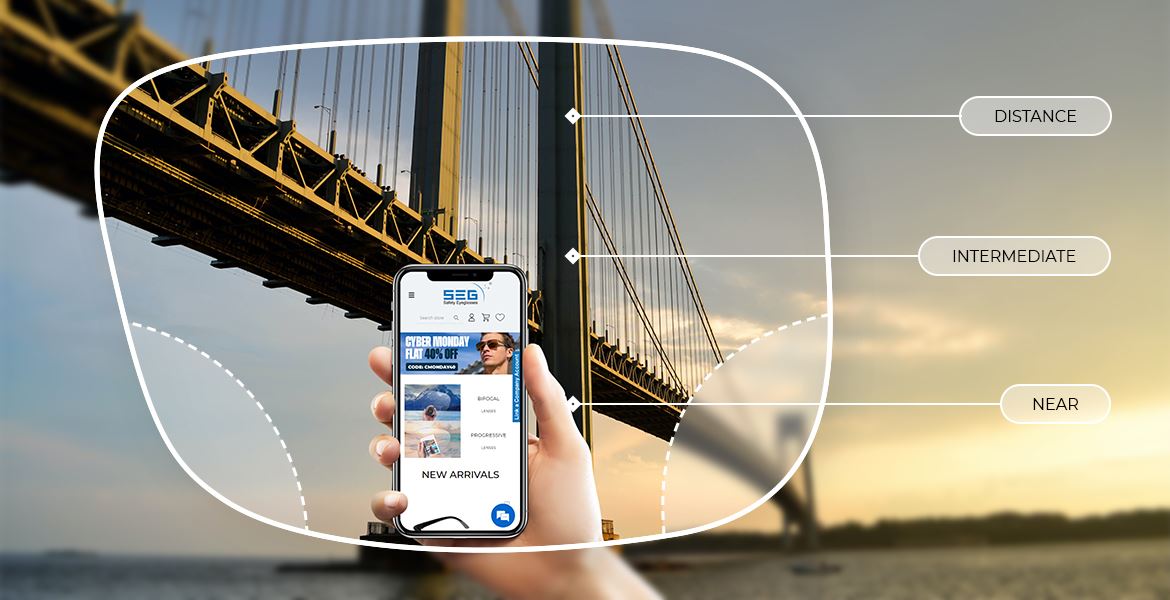
Blog
Everything to Know About Progressive Safety Lenses
What are Progressive Lenses?
They look just like any prescription lens that you may have in your glasses. They have an untapped talent: Each one has multiple prescriptions or "powers." Three viewing areas are available with progressive lenses: near vision at the bottom (for reading), intermediate vision at the center (for driving), and distance vision at the top (for driving).
Table of Contents:
- What is the best Material for Progressive Lenses?
- Are Progressive Lenses Better with Small or Large Frames?
Your eyes get older with age; they have put in a lot over the years and may now need some assistance to see clearly at distances. You may have noticed that your near vision has changed. You might need reading glasses to read a book. For certain tasks, you may have to take off your prescription glasses. It takes a lot of moving around to find what is comfortable. That's where progressives are useful. People who require help seeing far, near, and in between are increasingly turning to progressive lenses.
Progressive lenses can accommodate multiple eye prescriptions so you can see clearly from different distances. These lenses allow you to perform tasks that require close-up, intermediate, and distant vision without having to swap frames or take off glasses.
There are a few different names for Progressive Lenses.
- "No-line" progressive glasses,
- Trifocals, or multifocal or varifocals.
- Progressive addition lenses. This acronym can also be used to refer to them as PAL.
What are the Three Levels of Progressive Lenses?
Progressive lenses are well-known for their ability to improve vision. There are three levels to it:
Distance
Intermediate
Near
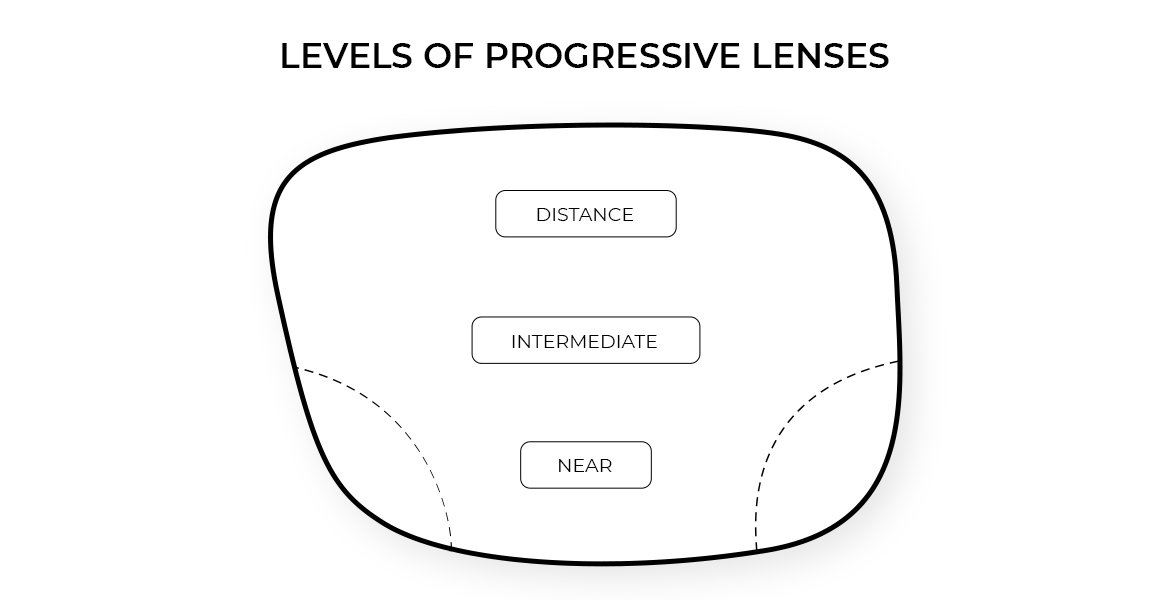
There are many types and styles of progressive safety lenses.
Computer Progressive Lenses:
Clear vision in offices is possible with progressive computer lenses, also known as near-variable focus lenses. These lenses are great for people who use computers for more than 4 hours per day. They also help reduce visual fatigue (digital eye strain). These lenses can be used indoors and should not be worn with regular glasses. This has the downside that you will need two pairs of eyeglasses. Computer progressive lenses can be thought of as niche eyewear that relieves discomfort but doesn't replace regular glasses.
Premium Progressive Lenses:
Premium progressive lenses offer a better view and are more comfortable. These lenses can be customized to fit your prescription, selected frame, and eye anatomy. Your dominant eye is often included in premium progressive lenses. These lenses make it easier to switch between prescriptions. These features are why premium progressive lenses can be expensive.
Ground-View Progressive Lenses:
People who love the outdoors will be happy with ground-view progressives. These lenses will give you a natural look and reduce distortion. Ground-view progressives provide better vision from the sides and bottom of your lens. This improves your vision while driving, using computers, and looking down.
Standard Progressive Lenses:
Standard progressive lenses sound exactly like regular progressive lenses. These lenses have a wider reading area than other lenses, but they are also less specialized. Standard progressives have a greater drop between prescriptions, and larger frames are required.
Short Corridor Progressive Lenses:
These short corridor progressives can be adapted to small frames. These progressives offer practicality in exchange for a fashionable appearance. Because of their lens size, some people have trouble transitioning to short-corridor progressives. This can cause vision to feel blurred or distorted.
Transition Progressive Lenses:
Transitional progressive lenses do not constitute an official type. Photochromic lenses are also known as Transitions. These lenses darken under ultraviolet (UV) light and provide shade for your eyes. These lenses can be used as an alternative to sunglasses. No matter what type of progressive lens you select, it can be hard to get used to new glasses. These tips will help you feel at ease with your new glasses.
How is it Different from Bifocal and Single Vision?
Progressive Lenses:
Progressive lenses combine all the features you want in one lens. They are a newer technology that corrects vision problems far and near. However, progressive lenses also cover everything in between as your eye scrolls downward. Progressives are a great choice because they don't have as many lines as bifocal lenses.
Bifocal Lenses:
Bifocal lenses can correct for two focal points, as opposed to one with single-vision lenses. Bifocals offer distance correction at the top and better close-up sight at the bottom. The lens is divided by a visible line. Check out the complete guide about bifocal lenses.
Single Vision Lenses:
A single vision correction corrects one visual problem. These lenses correct one focal length, near or far. Single-vision glasses are useful for driving and walking, as well as other activities that require you to see further away. They can also be used when you need to see closer than your face, such as reading or working on a computer. This lens works well when it is correcting a single distance. Click to read the complete guide about single-vision lenses.
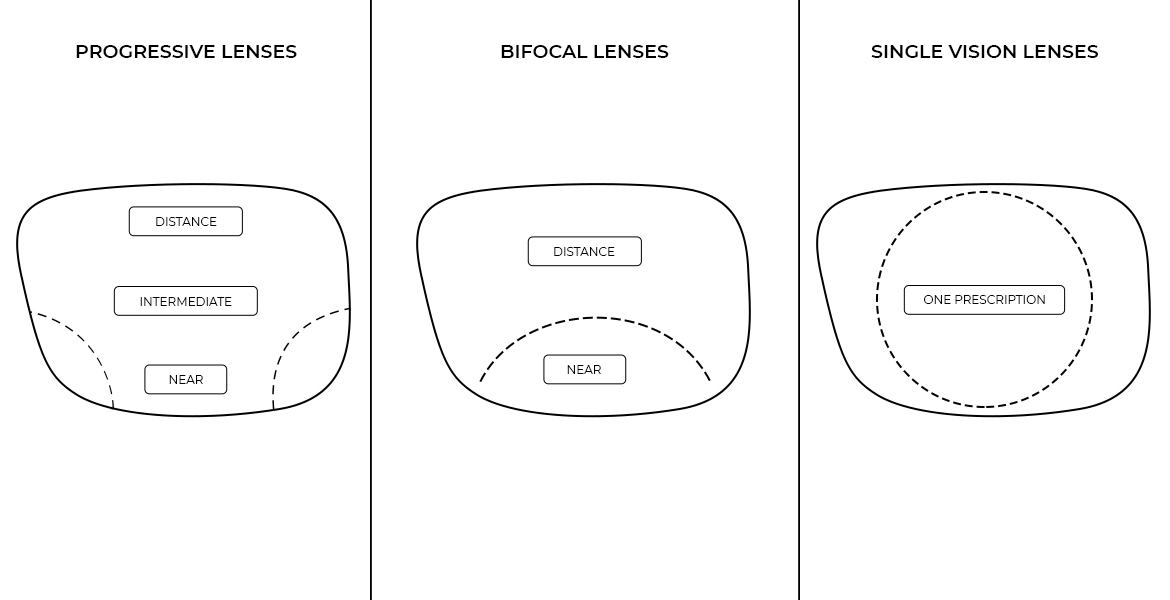
Single Vision vs. Progressive Lenses vs. Bifocal:
Perhaps you are wondering which lens is best for me. It all depends on what prescription you have.
- A single-vision lens is best for those who have only one problem with their eyes.
- Bifocals are a great option if you have difficulty seeing close-ups and far away.
- Progressives are the best choice if you don't like the lines on bifocal lenses. They can handle the distance, reading, and everything in between.
What is the Advantage of Progressive Lenses?
There are some of the benefits of wearing progressive lenses.
1. Only one Pair of Eyeglasses is required:
Many people find that having a single pair of progressive lens eyeglasses is easier. These lenses are more versatile than single-vision ones and allow for clear vision at different distances. You don't need to carry an additional pair of glasses.
Progressive lens eyeglasses can serve both single-vision as well as reading functions. Both can be discarded as the single pair covers all your vision requirements.
2. There is no need for an Unattractive Bifocal Line:
A progressive lens gives you the advantages of multifocal lenses without having to use a multifocal line. Because the strength of the lens slowly shifts, you don't have to worry about sudden clarity changes. This lens is not like multifocal lenses and won't cause strain to your eyes.
Older multifocal lenses can suddenly change their clarity because they lack the fully integrated transition from different lens powers. This is why you will see a line between each section of these lenses. This makes the transition more abrupt than progressive lenses, which are more natural.
3. A more Modern, Youthful Appearance:
Multifocal lenses (bifocal and trifocal) are often associated with old age. You might feel self-conscious if you wear eyeglasses that have bifocal lines. You might feel more at ease wearing progressive lenses eyeglasses if there is no visible line.
4. A Peripheral Vision Adjustment is also available:
Progressives have not only vertical shifts of power but also horizontal shifts of clarity. The field of view can be significant thanks to modern lens technology. However, distortion is introduced by the outer edges of lenses.
While most people can adjust quickly to the distortion, some people with high peripheral vision sensitivity simply cannot. This distortion is not present in single-vision or line bi-focal lenses. In some cases, they might be the best option.
5. Smooth Transition:
As noted above, older versions of trifocal and bifocal lenses did not fully integrate a transition between different lens powers. These lenses left users with a line connecting each section, allowing for a sudden transition from one distance or another. Progressive lenses, on the other side, are more natural looking.
What are the Disadvantages of Progressive Lenses?
It may take some time to get used to progressive lenses:
Progressive lenses may take up to one month to get used to. You might feel distorted in your near vision, which can make it difficult to perform routine tasks like reading or sewing.
You don't have to be anxious about it. Once you start to get used to them, you will find yourself reaching for them all the time. Wear your progressive lenses as much as possible to speed up the adjustment process. Your eyes will eventually adapt.
Some frames may not be suitable:
There are many progressive lenses. Not all frames will work with them. Remember that progressive lenses can clear your vision at three distances, so all viewing areas must be included in your new frames.
Your frames may not be large enough to accommodate your bottom viewing area. This can affect how you see objects that are closer to you. Other styles of frames may not work. Aviators, for example, can reduce the area of the bottom that is near the eye, making it difficult to read. For the same vision at all distances, you will need to search for round frames.
Progressive lenses are more expensive than single-vision lenses:
Progressive lenses offer three prescriptions in one pair. This is a great advantage. This comes at an additional cost.
This lens is more expensive than single-vision lenses. Standard progressive lenses are more affordable than single-vision lenses. Premium progressive lenses offer better clarity and are more affordable if you are looking for something unique.
Wearing progressive lenses can have side effects. These side effects include:
Dizziness:
Wearers of progressive lenses may experience dizziness and vertigo due to the three focal lengths. The lenses provide a gradient of increasing strength, from long- to medium distance to short distance. The top section is for driving and walking; the bottom section is for reading and writing.
One common mistake people make when wearing lenses for the first time is to look out for the wrong focal length. This can cause blurry vision and dizziness. This problem can be corrected by correctly adjusting your glasses to your face and learning how to move your head while searching for something.
Peripheral Distortion:
Progressive lenses can also blur peripheral vision, which is another side effect. Progressive or not, most glasses will distort vision. The three segments in these lenses can cause a more noticeable distortion than other eyeglasses. The distortion will eventually disappear. Most people say it takes two weeks for progressive lenses to become comfortable.
Depth Perception:
When looking at objects, people tend to focus on their eyes. Wearers of progressive lenses need to be more careful about how they look at objects because the lens power gradient can make it difficult for them to see clearly. It is important to use progressive lenses. When focusing on objects at different distances, your head should be moving and not only your eyes. Your nose should point at the object that you want to focus on. Progressive lenses can alter depth perception and make it feel off.
Should I wear Progressive Lenses all the time?
Imagine switching between glasses several times per day. This is a common problem for many people. Fortunately, there are ways to reduce the number of glasses you need and have one pair that meets all your prescription requirements.
These lenses are called progressive lenses. These lenses can accommodate multiple prescriptions and offer three viewing areas: up close, intermediate, or far. You don't have to change your glasses every day when you move into another activity.
This may seem like a great idea, but can you wear progressive lenses every day?
For the first-time progressive lens wearer, it may take a few weeks to get used to their new glasses. If you are one of these people, you should wear your glasses as often as possible to get used to them.
Progressive lenses can be worn all day. It is important to wear progressive lenses every day. Tip: Keep them on your sideboard so you can reach for them every morning. You'll find it a part of your daily morning and evening routine.
You may need to be able to fix progressive lens problems if you wear this type of eyewear every day. Blurry peripheral vision is one issue that you may face. Blurred peripheral vision is easily fixed by moving your head instead of your eyes when looking at distant objects. This is because looking beyond your frames and out of your glasses can cause visual distortion.
You will likely have three prescriptions if you are a first-time wearer of progressive lenses. You will need to understand how progressive lenses work and what you can do about common problems with progressive lenses.
These are some important things to remember:
For distance vision, the top of your lenses provides the best visibility. The lenses magnify as you look further down, which allows you to see up close.
If progressive lenses are causing discomfort, take a break. Next, apply them again. They will become more comfortable as you wear them.
You should ensure that your progressive lenses are correct if you have difficulty seeing the computer. You'll need to see through the middle of your lens if you are looking at something from an intermediate distance, like a computer monitor.
You may notice blurred or distorted vision when you first purchase this type of eyewear. These symptoms will diminish the quicker you wear the lenses. Give them a chance. You will be glad you did.
Is there Something Better than Progressive Lenses?
Progressive lenses are basically "no-line bifocals." Instead of having a clearly defined bifocal, progressive lenses will gradually shift. This will enable the wearer to see at all distances. People who don't wish to wear glasses can also opt for progressive contact lenses. People won't even notice that there are any lens lines.
Your progressive lenses may take some time to adjust to. Some progressive lens wearers might experience blurry vision, headaches, or difficulty balancing right after switching. Although this can be frustrating, it is important to learn to live with your new lenses. These are some tips:
Move the book when you read, not your eyes.
Place the item in front of you about 18 inches from your eyes. Make sure to look through your bottom lenses.
Talk to your eye doctor if your lenses continue to bother you after a few weeks. You may need a new prescription.
You shouldn't change between your new glasses and your old pair. It is important to adjust your eyes to the new lens.
When switching to progressive lenses, it is important to be patient. They can take anywhere from a few hours to several weeks to become comfortable with them. They are an excellent alternative if you don't like bifocals.
There are Four main differences between progressive lenses and bifocals.
- Progressive lenses can provide clear vision from all distances, while bifocals are limited to two fields of vision.
- Bifocals are characterized by lines that run between the two fields of vision. Progressive lenses, on the other hand, have no visible lines.
- They can seamlessly transition from one field to another, which is a major selling point. From a financial perspective, progressive lenses are more costly than simple bifocals. The cost of progressive lenses can vary depending on which type you choose.
- Bifocal and progressive lenses are used to treat presbyopia. Progressive lenses can easily be changed between near and distant prescriptions within the lens. However, bifocal lenses have a distinct line that separates near vision from far. Consider your lifestyle and personal preferences when deciding on the right type of lens for you.
What is the best Material for Progressive Lenses?
SafetyEyeGlasses uses polycarbonate to make progressive lenses. This is because it has
- High transparency
- Strength
- High refractive Index
This industry term refers to how light can bend a material. Polycarbonate progressive lenses can be thinner than regular plastic and glass lenses due to their high refractive index.
Progressive polycarbonate eyeglasses can provide perfect vision without affecting your appearance in any way. The progressive polycarbonate lens is virtually indestructible, so it's safe for adults and children who do a lot of exercise.
SEG(SafetyEyeGlasses) stocks a variety of progressive lenses made from polycarbonate. We have top-quality brands like Wiley X, 3m/Pentax, ArmouRx, DVX, and many more. Our lenses allow you to see clearly with minimal peripheral distortion. This is a common problem with progressive lenses.
Safetyeyeglasses.com provides Safety Frames with Progressive lenses with three Lens Usage.
Everyday Progressive
Digital Eye Strain Progressive
Sunglass Progressive
Lenses generally consist of "polycarbonate" material. SEG offers customization "Multifocal lenses" to upgrade your lens material.
- Plastic Cr39
Hi-Impact Polycarbonate
Premium Trivex
Are Progressive Lenses Better with Small or Large Frames?
The minimum height for your lens fitting should be 28mm – 30mm.
The most important factor is the lens height. Progressive lenses require a minimum height. This can also be a problem for smaller faces that may get overwhelmed by excessive lens height.
For small faces, small height:
They are an excellent option for those who need small oval or rectangular frames because they can fit short corridor lenses on frames as low as 13mm in height. Short corridor lenses can be a good option if you feel your face is too high from the frame.
It is important to note that less height means less space for different prescriptions. You may be able to achieve a better result by going for the highest height you can manage while still looking great.
Some can use larger frames:
Larger lenses that have a distance between the near field and the distance field, 19mm, give you a wider field of view at the Laptop distance. A smaller, progressive lens design that is closer to your laptop at 12-14mm may be better for you. This was a broad statement. Sometimes, dizziness can be caused by a larger lens. Let's get into the subject to help you select the best progressive lenses.
Frame shape:
Some frame shapes may not be suitable for progressive lenses. Particularly, certain frame shapes, such as aviators and dramatic cat-eyes, may be problematic for progressive lenses. This is because the lower portion of the lens can be cut off, which could result in reduced near vision prescription.
People often need corrective lenses to correct their nearsighted or farsighted vision. If your workplace requires you to wear safety glasses or goggles, you will not be able to wear your regular eyeglasses as they are not sufficient protection.
For clear vision and essential eye protection, progressive safety glasses are the best choice. SEG offers a wide range of prescription safety glasses that include progressive lenses. Safety glasses are as important as the work they do. Prescription safety glasses are essential for anyone who works on the job. Your workday can bring about a lot of dust, debris, and other potentially dangerous substances that could cause eye irritation.
SEG, the safety glasses specialist, is available to you regardless of your industry. Every day you work hard. Let us take care of this. You have a wide range of options when it comes to frame styles and colors at SEG.
Our range of progressive safety sunglasses and eyeglasses contains elegant frames like
We strive to provide frames that can be worn for multiple occasions. , You will be able to endure adventure through adventure. They all feature lightweight, durable construction and UVA- and UVB-blocking lenses.
From 3m/Pentax F9800, 3m/Pentax Gamma, and 3m/Pentax zt55, we provide you with all. Get the best safety glasses with progressive lenses at SEG without any complicated ordering procedures. Order now!


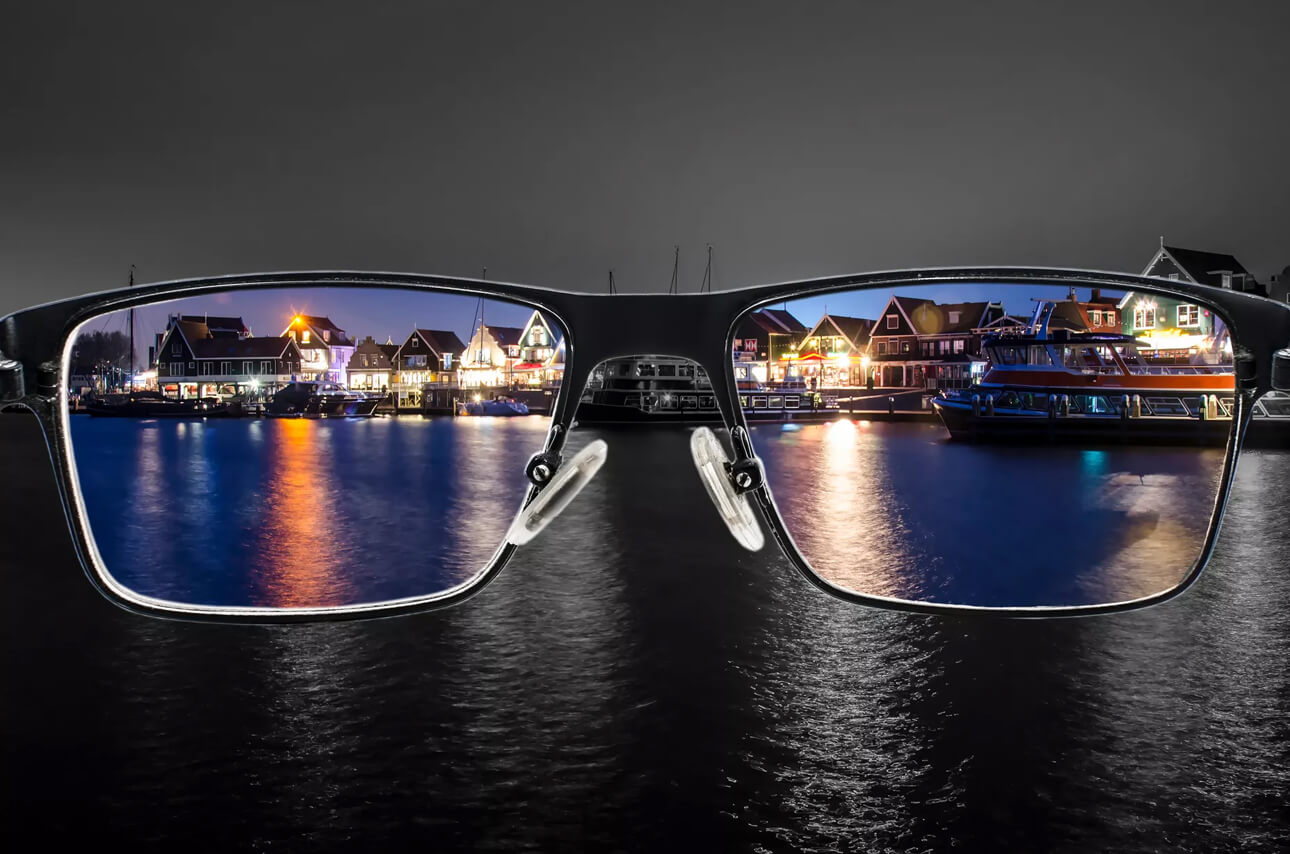



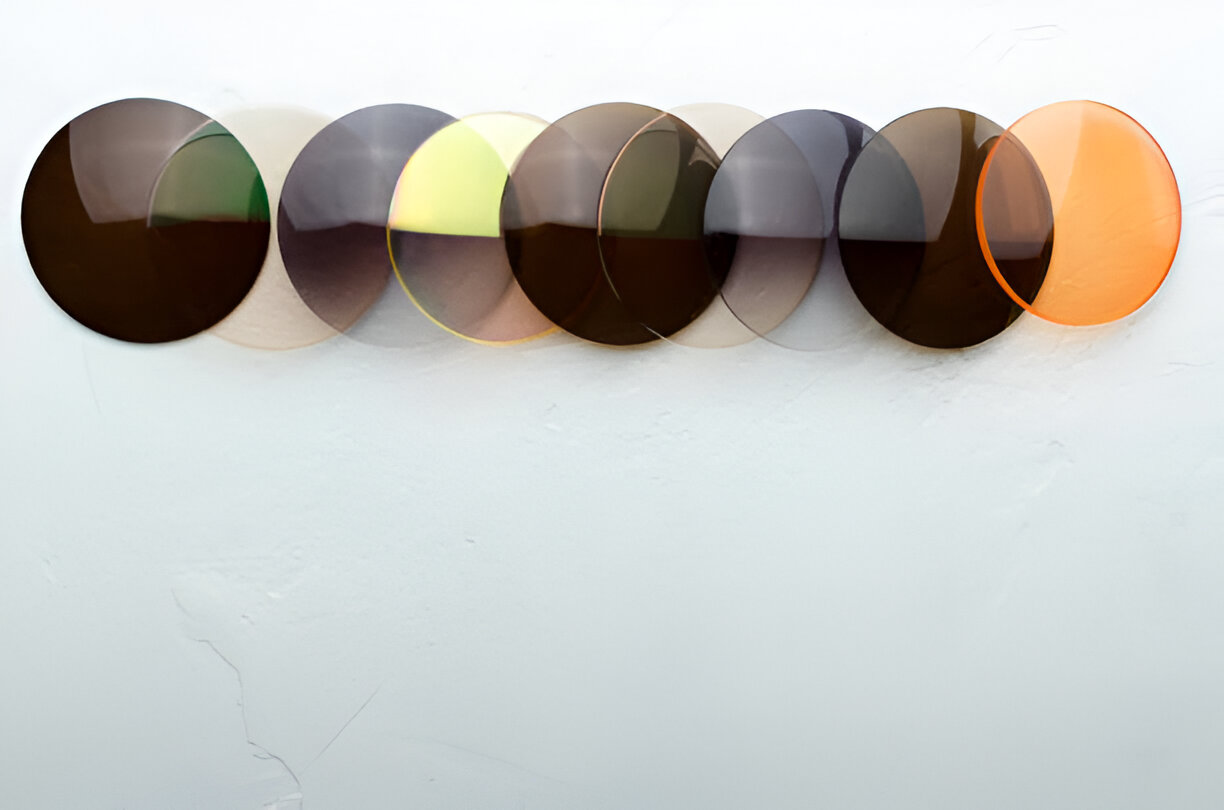

Leave your comment